
Depending on the damage type, window repair costs in New York can be high. Learn the factors that influence the cost to fix your windows.
Worn-out windows can leave you feeling weathered


Windows can last 15 to over 50 years.
Warped frames, gaps, and cracks can be signs of old windows.
You should consider the cost of repairing vs. replacing windows.
Replacing a window costs around $100 to $750.
If you’re cleaning your windows and notice a little draft, you may be wondering if it’s time for replacements. Although windows are designed to last a long time, natural wear and tear can cause problems, including drafts or water leaks. So how long do windows last? It depends on a few factors, and there are several signs to keep an eye out for that can tell you it’s time to call a local window company to repair or replace your windows.
Windows can last anywhere between 15 and 30 years, with glass lasting around 20 years and frames lasting up to 50 years on average. Windows naturally wear out over time, which can lead to air or water leaks as the window seals break down.
Several factors can determine a window's lifespan, from the type of frame and glass to the local climate to how the initial contractor installed the window. Energy-efficient windows typically last longer, while single-pane or low-cost windows fall on the short end. It’s best to shop for windows with warranties that are at least 10 years long (or ideally 20 years) and look for warranties that will help cover any replacement parts if the window parts prematurely fail.
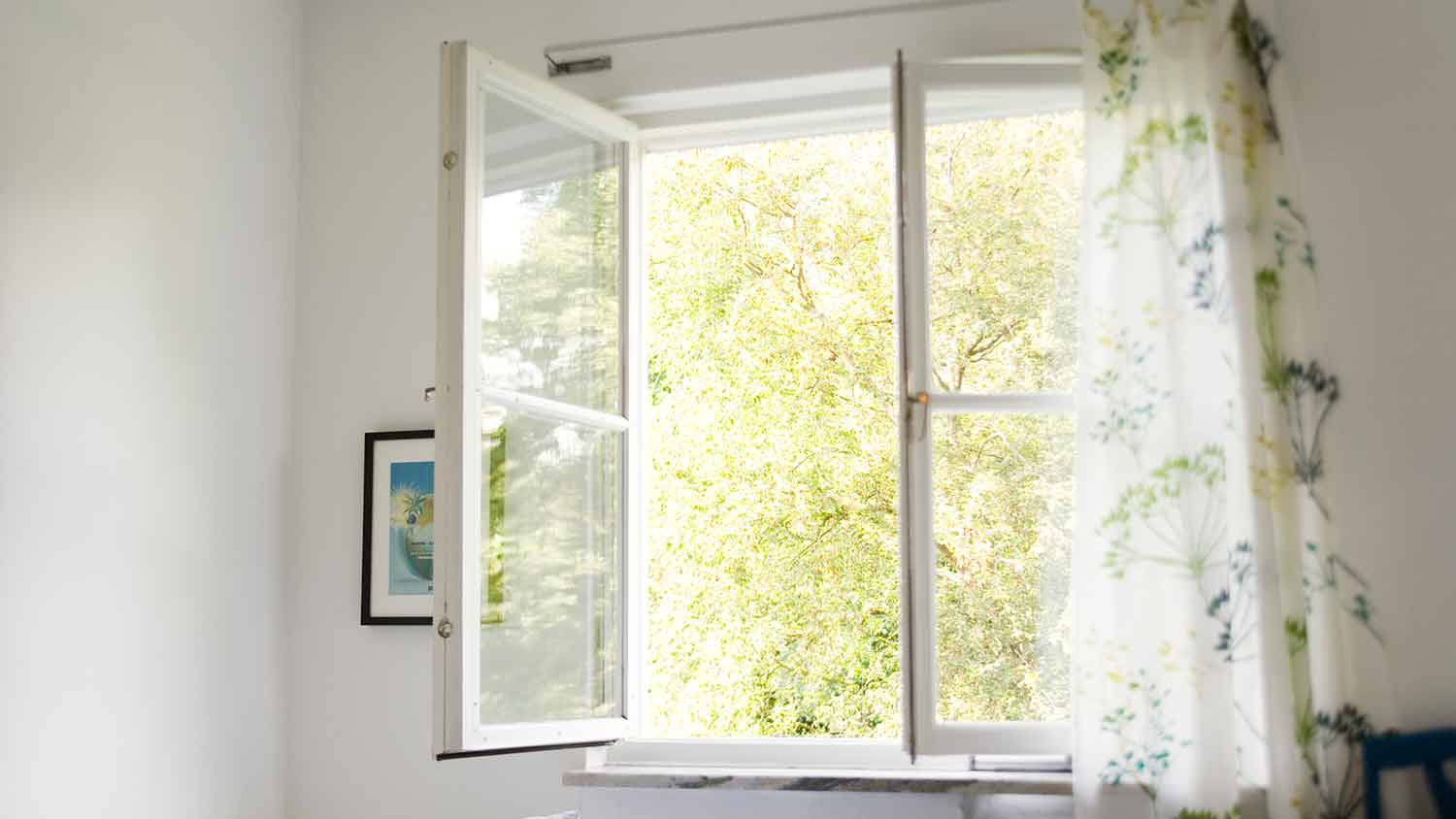
The window frame materials play an important role in how long windows last. Improper installation or maintenance can lead the frame to warp, rust, or crack, causing drafts, water leaks, and other costly damages.
Fortunately, though, window frames can last decades when installed correctly and cared for over the years. Window maintenance, like keeping the window glass and frame clean and lubricating the moving parts, can help you get the most out of your windows.
Here’s what to expect from the life spans of different window frame materials:
Wood frames will last well over 20 years, but you’ll need to repaint or seal them every few years to give them better protection against the elements. Otherwise, wood frames can be susceptible to rotting, warping, or cracking.
Vinyl window frames will last about 20 to 40 years, depending on your climate. Vinyl windows are easy to care for, as you don’t have to frequently refinish them. However, they are vulnerable to extreme cold and hot temperatures, which can cause the material to warp.
Aluminum window frames have a life span of about 30 to 45 years with regular maintenance. They don’t require a lot of TLC, but cleaning with non-abrasive cleaners and soft cloths is the best way to get the most life out of aluminum. Aluminum window frames will not rust, which makes this material more suitable for windows than other metals.
Fiberglass window frames are increasingly popular for their durability. This material can last over 50 years and is known for being energy-efficient despite requiring little maintenance outside of regular cleaning and lubrication. Like vinyl, fiberglass is also not vulnerable to extreme temperatures, but fiberglass does come at a higher price point.
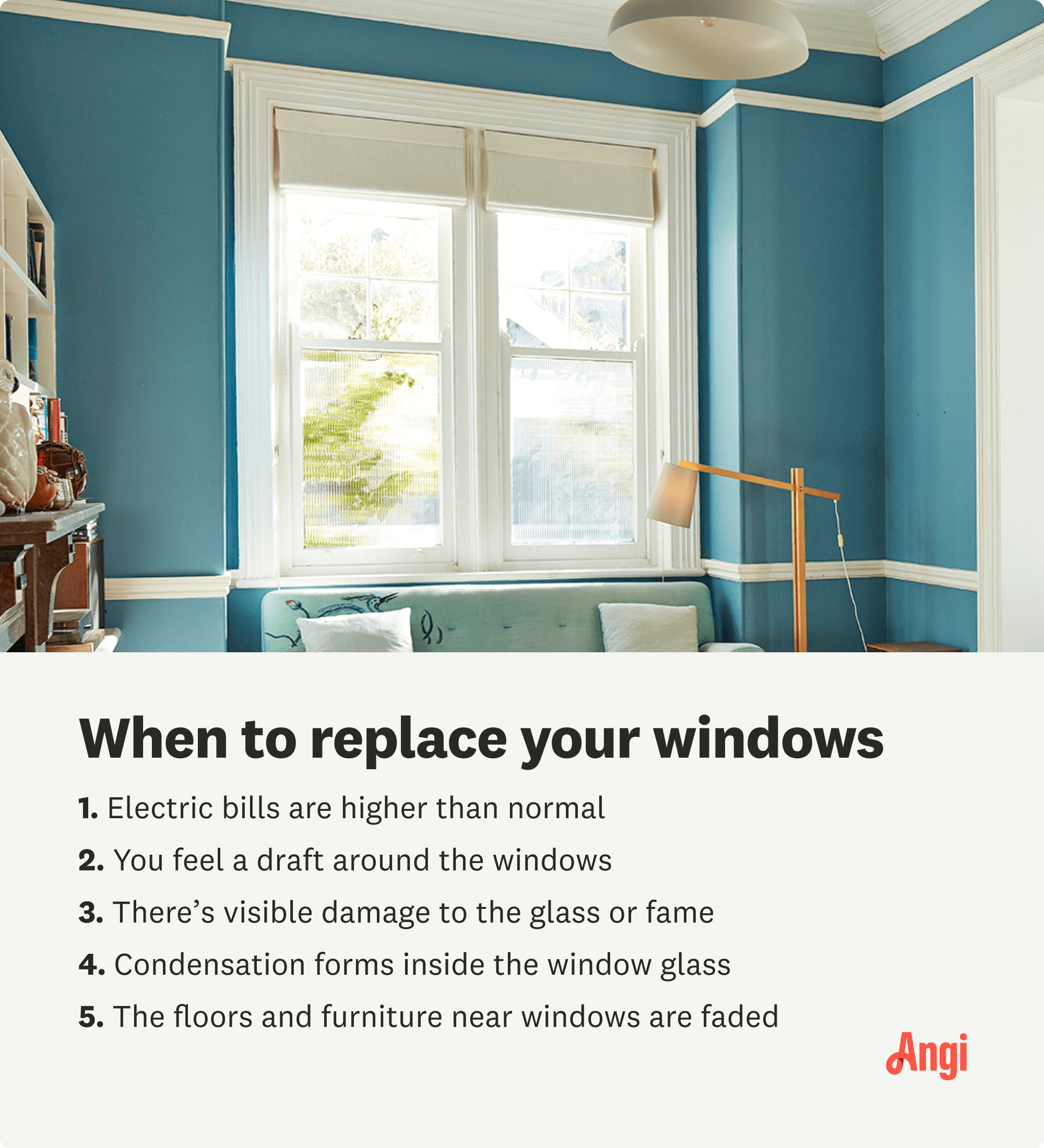
Although most windows will last for decades, there are some signs to look out for that can tell you when it’s time to start choosing replacement windows. When your windows aren’t keeping out the elements as well as they once did, it’s usually a sign that they need an upgrade. Otherwise, you risk paying higher utility bills or paying for costly repairs due to water damage.
It’s natural for there to be condensation on the outside of the window, but if you notice condensation on the inside of the window glass or between two window glass panes, it could mean that the window seals are failing. Rather than paying the cost for window treatment so you don’t have to see the problem (and subsequently the damage it causes), you should pay for a replacement.
When the kids throw a baseball a little too hard and hit the window, it’s time to replace the glass. Cracked windows can let in drafts or water or could fully break sooner than you expect. You may also notice cracks or damage on the frame. For the most part, frame cracks alone shouldn’t cause problems. In wood, however, cracked frames could lead to wood rot if exposed to moisture.
If you feel air flowing around the window sash even when the window is fully closed, it means the seal is weakening or the frame has warped enough to create gaps. Drafty windows will let in cold winter air or hot summer air, and you’ll be throwing money away as your HVAC system has to work harder to keep your interior at a comfortable temperature.
Older windows without protective UV treatments aren’t able to block harmful UV rays from sunlight. As a result, the floor and furniture around your windows may look faded. That could mean it’s time to upgrade your windows to newer models with a UV-blocking treatment, or you can consider updating your windows with an add-on film that blocks UV rays.
Even if you don’t feel drafts around the window, there could be other signs that you need to replace your windows. If your window seals are worn out or there are gaps around the windows, the HVAC system will run less efficiently, leading to higher electric bills. (Just keep in mind that higher electric bills could also be a sign of other problems, like a damaged HVAC system or aging appliances.)
You could also consider paying for additional energy-efficient upgrades, like the cost of plantation shutters, to help maximize your home’s efficiency.
Like any part of your home, windows require some TLC to ensure they last as long as possible.
Clean and lubricate moveable parts at least once a year. Dust easily builds up on parts like tracks and rollers. Wipe them down with a wet cloth and add lubricant to make sure they open smoothly.
Add weather stripping as needed. If you notice a draft, consider upgrading your window’s weatherstripping.
Inspect them regularly. While you tackle your annual lubrication, take a minute to look over the window for any cracks, scratches, or leaks.
Repair issues immediately. If you notice anything wrong with your window, don’t wait to get it repaired, as it can lead to much costlier issues down the road.
Wash window screens. Screens are often forgotten, but if they are damaged or broken, your window is at risk for much costlier damage. Inspect them regularly and clean them as needed.
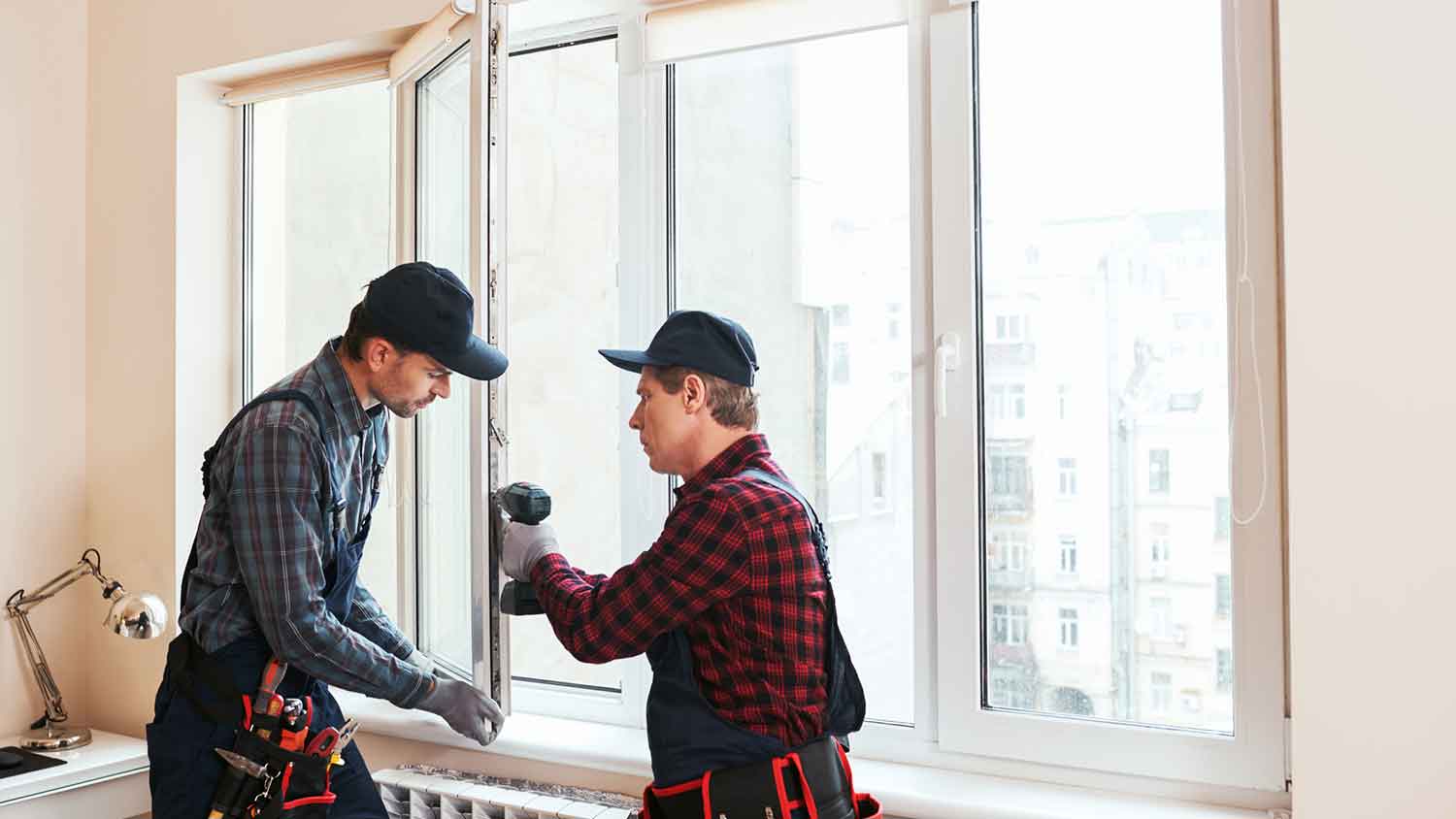
When considering whether to repair or replace a window, keep the age of the window in mind. A broken seal or cracked glass can be repaired without replacing the entire window. On the other hand, if the window is over 20 years old, it might be worth the higher cost to replace the window rather than paying for multiple repairs to try to fix an old window.
Window replacement costs around $100 to $750 for each window. Upgrading to energy-efficient windows or windows with better soundproofing may cost more up front, but they can save you money each month on energy bills and may have a longer lifespan. For example, triple-pane windows cost around $300 to $2,750 per window, and these windows can last well over 30 years with proper care.
You’ll likely spend between $175 and $610 on window repair costs for each window. However, your costs will depend on the type of damage, the extent of the damage, and the typical cost of labor in your region. Common repairs you may need include fixing a broken latch, repairing a seal, or replacing a glass panel that’s cracked or broken. If you have questions about blinds or other treatment options, you can ask during your repair as well.
From average costs to expert advice, get all the answers you need to get your job done.

Depending on the damage type, window repair costs in New York can be high. Learn the factors that influence the cost to fix your windows.

A new arched window can boost curb appeal, home value, and energy efficiency. Learn how much arched windows cost and what factors to consider.
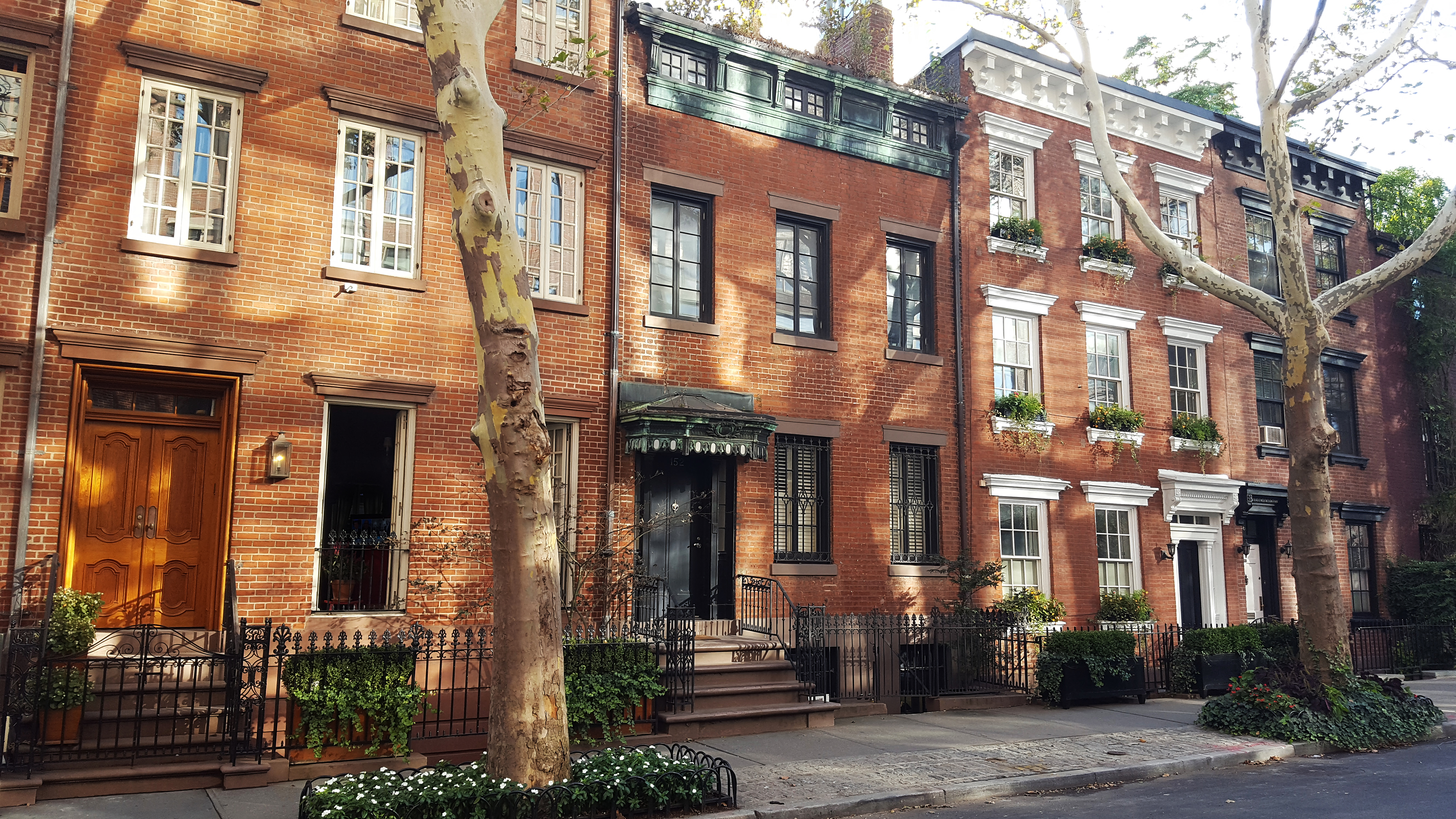
Replacing your old windows improves curb appeal and can regulate your home’s interior temperature. Learn about average window replacement costs in New York.

Follow these step-by-step instructions to fix a cracked window yourself and avoid a costly replacement using two-part resin and basic tools.
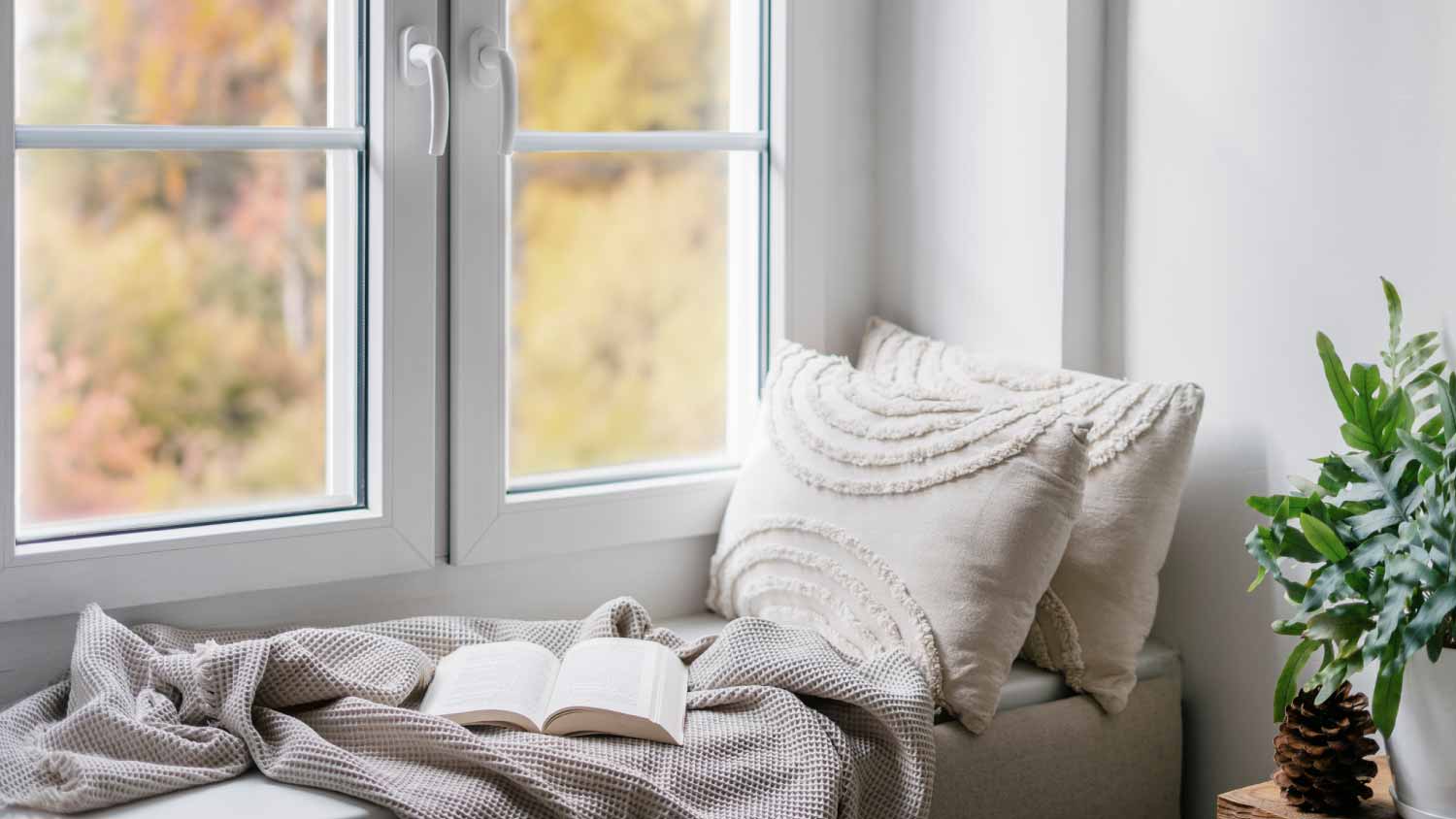
Want to know how long vinyl windows last? Learn the average lifespan of vinyl windows and the core factors that affect their performance over time.

Want a quieter home? Learn how to soundproof windows with seven practical methods that block noise and boost comfort—light sleeper and city dweller approved.